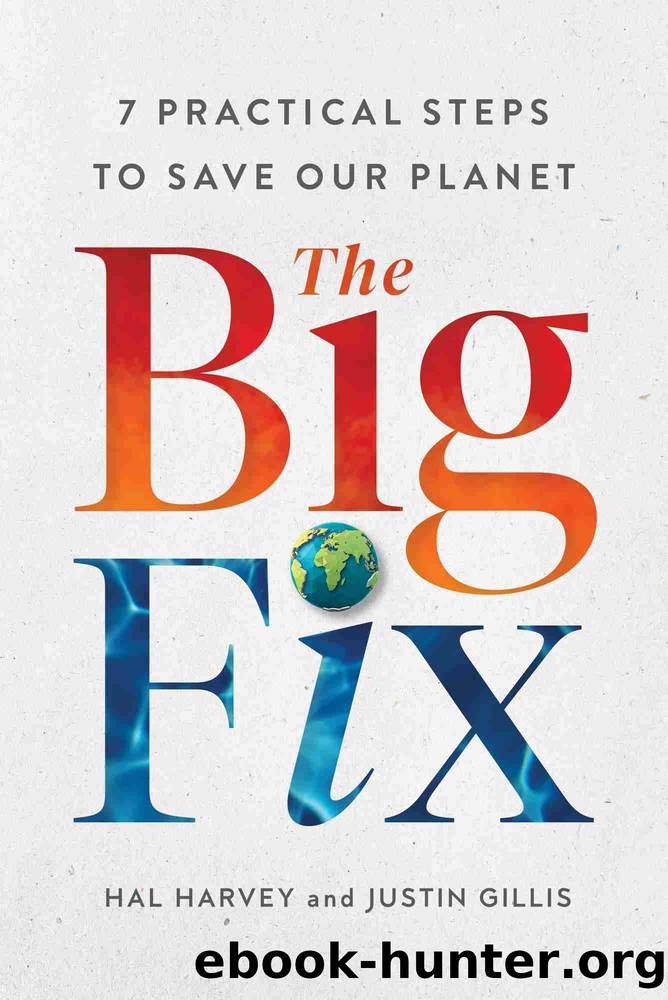The Big Fix by Hal Harvey & Justin Gillis

Author:Hal Harvey & Justin Gillis
Language: eng
Format: epub
Publisher: Simon & Schuster
Published: 2022-09-20T00:00:00+00:00
Feeding the World
Poor people all over the world were in an uproar. In Mexico City, marchers banged metal pots and pans in front of government buildings for days on end, theatrically turning the pots upside down to show they were empty. In Egypt, rioters burned cars and knocked out the windows of government buildings. In Haiti, the riots grew so fierce that the countryâs limited hospital beds filled with injured people, and public anger forced senators to fire the prime minister and form a new government.
Riots or public protests erupted in at least thirty countries, and tensions escalated in dozens more. The cause of all this turmoil, starting in late 2007 and cresting in 2008, was a rapid global escalation in the price of the basic food commodities, including rice, wheat, and corn, on which poor people depend. Failed harvests in several major producing countries, caused or exacerbated by the intensifying heat waves that are characteristic of the climate crisis, was a major underlying reason for the price run-up. The United States is a large grain exporter, so an American policy of turning nearly a third of the countryâs corn crop into ethanol for use in vehicles did not help. If we run a contest for grain between Americaâs SUV drivers and poor people living on the margin, guess who wins.
If governments had reacted wisely, the crisis might have been manageable, but they reacted foolishly. Panicked by the prospect of running out of food, some middle-income countries started closing their borders to grain exports, even as many poorer countries were desperately trying to get their hands on supplies. The result was a predictable chain reaction in which more and more countries effectively hoarded food within their borders, escalating a global price spiral. The spikes were felt only modestly by people in rich countries, where basic commodity prices represent only a small part of the cost of processed foods. But in countries where people spend the bulk of their income on a bit of grain to get their families through the next day, the result was chaos. Over those years, global hunger made its largest jump in decades.
The global financial crisis that followed later in 2008 and 2009 helped to drive prices back down, and several years of robust harvests refilled depleted global stocks. Yet the whole affair was replayed a few years later, in 2011, after a new round of failed harvests. Grain prices spiked even higher than they had in 2008. But this time, governments were better prepared, and financial experts worked behind the scenes to head off the panicky border closures of a few years earlier. The second crisis ebbed with less public anger than the first, though it was still hard on the worldâs poor. In the years since, harvests have been good most years, and global commodity markets have been operating smoothly. Perilously low stockpiles have been rebuilt to a degree, and commodity prices are once again low enough that farmers in exporting countries are complaining about them.
Download
This site does not store any files on its server. We only index and link to content provided by other sites. Please contact the content providers to delete copyright contents if any and email us, we'll remove relevant links or contents immediately.
Man-made Catastrophes and Risk Information Concealment by Dmitry Chernov & Didier Sornette(5926)
The Revenge of Geography: What the Map Tells Us About Coming Conflicts and the Battle Against Fate by Kaplan Robert D(4037)
Zero Waste Home by Bea Johnson(3782)
COSMOS by Carl Sagan(3559)
Good by S. Walden(3490)
In a Sunburned Country by Bill Bryson(3486)
The Fate of Rome: Climate, Disease, and the End of an Empire (The Princeton History of the Ancient World) by Kyle Harper(3007)
A Wilder Time by William E. Glassley(2818)
Camino Island by John Grisham(2764)
The Ogre by Doug Scott(2635)
Organic Mushroom Farming and Mycoremediation by Tradd Cotter(2631)
Human Dynamics Research in Smart and Connected Communities by Shih-Lung Shaw & Daniel Sui(2466)
Energy Myths and Realities by Vaclav Smil(2441)
The Traveler's Gift by Andy Andrews(2414)
9781803241661-PYTHON FOR ARCGIS PRO by Unknown(2326)
Inside the Middle East by Avi Melamed(2306)
Birds of New Guinea by Pratt Thane K.; Beehler Bruce M.; Anderton John C(2226)
A History of Warfare by John Keegan(2186)
And the Band Played On by Randy Shilts(2132)
